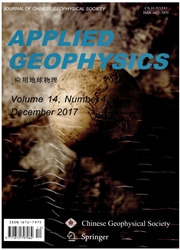

 中文摘要:
中文摘要:
复杂地球物理的数据的倒置总是解决多参数,非线性、多模式的优化问题。寻找最佳的倒置答案类似于当寻找食物时,在象鸟和蚂蚁那样的群观察的社会行为。在这篇文章,首先,粒子群优化算法详细被描述,并且蚂蚁殖民地算法改善了。然后,方法被用于地球物理的倒置问题的三种不同类型:(1 ) 对噪音敏感的一个线性问题,(2 ) 线性、非线性的问题的同步倒置,并且(3 ) 一个非线性的问题。结果验证他们的可行性和效率。与常规基因算法相比并且退火模仿,他们有更高的集中速度和精确性的优点。与伪相比 -- 牛顿方法和 Levenberg-Marquardt 方法,他们与克服局部地最佳的答案的能力更好工作。
 英文摘要:
英文摘要:
The inversions of complex geophysical data always solve multi-parameter, nonlinear, and multimodal optimization problems. Searching for the optimal inversion solutions is similar to the social behavior observed in swarms such as birds and ants when searching for food. In this article, first the particle swarm optimization algorithm was described in detail, and ant colony algorithm improved. Then the methods were applied to three different kinds of geophysical inversion problems: (1) a linear problem which is sensitive to noise, (2) a synchronous inversion of linear and nonlinear problems, and (3) a nonlinear problem. The results validate their feasibility and efficiency. Compared with the conventional genetic algorithm and simulated annealing, they have the advantages of higher convergence speed and accuracy. Compared with the quasi-Newton method and Levenberg-Marquardt method, they work better with the ability to overcome the locally optimal solutions.
 同期刊论文项目
同期刊论文项目
 同项目期刊论文
同项目期刊论文
 期刊信息
期刊信息
